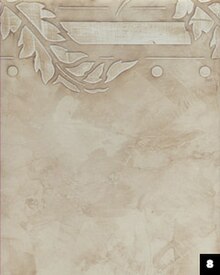Plaster
The plaster is manufactured as a dry powder and is mixed with water to form a stiff but workable paste immediately before it is applied to the surface.In Egypt, gypsum was burned in open fires, crushed into powder, and mixed with water to create plaster, used as a mortar between the blocks of pyramids and to provide a smooth wall facing.In the Earliest European settlers' plasterwork, a mud plaster was used[5] McKee [4] wrote, of a circa 1675 Massachusetts contract that specified the plasterer, "Is to lath and siele[6] the four rooms of the house betwixt the joists overhead with a coat of lime and haire upon the clay; also to fill the gable ends of the house with ricks and plaister them with clay.The early Nineteenth-Century utopian village in present-day Ambridge, Pennsylvania, used clay plaster substrate exclusively in the brick and wood frame high architecture of the Feast Hall, Great House and other large and commercial structures as well as in the brick, frame and log dwellings of the society members.The use of clay in plaster and in laying brickwork appears to have been a common practice at that time not just in the construction of Economy village when the settlement was founded in 1824.The surrounding forests of the new village of Economy provided straight grain, old-growth oak trees for lath.This allowed a rendering of clay plaster and setting coat of thin lime and fine sand on exterior-walled rooms.In Economy Village, the lime top coats are thin veneers often an eighth inch or less attesting to the scarcity of limestone supplies there.However, clay plasters still exist after hundreds of years clinging to split lath on rusty square nails.The wall variations and roughness reveal a hand-made and pleasing textured alternative to machine-made modern substrate finishes.γ-anhydrite reacts slowly with water to return to the dihydrate state, a property exploited in some commercial desiccants.Water is then added to produce slaked lime (calcium hydroxide), which is sold as a wet putty or a white powder.[23] Heat-resistant plaster is a building material used for coating walls and chimney breasts and for use as a fire barrier in ceilings.An example of a heat-resistant plaster composition is a mixture of Portland cement, gypsum, lime, exfoliated insulating aggregate (perlite and vermiculite or mica), phosphate shale, and small amounts of adhesive binder (such as Gum karaya), and a detergent agent (such as sodium dodecylbenzene sulfonate).Elsewhere in the world, such as the UK, ever finer layers of plaster are added on top of the plasterboard (or sometimes the brick wall directly) to give a smooth brown polished texture ready for painting.Plaster (often called stucco in this context) is a far easier material for making reliefs than stone or wood, and was widely used for large interior wall-reliefs in Egypt and the Near East from antiquity into Islamic times (latterly for architectural decoration, as at the Alhambra), Rome, and Europe from at least the Renaissance, as well as probably elsewhere.However, it needs very good conditions to survive long in unmaintained buildings – Roman decorative plasterwork is mainly known from Pompeii and other sites buried by ash from Mount Vesuvius.This "negative" image, if properly designed, may be used to produce clay productions, which when fired in a kiln become terra cotta building decorations, or these may be used to create cast concrete sculptures.Plaster is also commonly spread over an armature (form), made of wire mesh, cloth, or other materials; a process for adding raised details.[citation needed] Products composed mainly of plaster of Paris and a small amount of Portland cement are used for casting sculptures and other art objects as well as molds.Considerably harder and stronger than straight plaster of Paris, these products are for indoor use only as they degrade in moist conditions.The transparent material polymethyl methacrylate (Plexiglas, Perspex) is then vacuum formed over this bust to create a clear face mask which will hold the patient's head steady while radiation is being delivered.These diagnostic and working models are usually made from dental stone, a stronger, harder and denser derivative of plaster which is manufactured from gypsum under pressure.Plaster investments can withstand the high heat and pressure needed to ensure a rigid denture base.This negative impression was then, itself, filled with plaster of Paris, to create a positive model of the limb and used in fabricating the final medical device.Gypsum plaster releases water vapor when exposed to flame, acting to slow the spread of the fire, for as much as an hour or two depending on thickness.Plaster also provides some insulation to retard heat flow into structural steel elements, that would otherwise lose their strength and collapse in a fire.Recent plasters for fire protection either contain cement or gypsum as binding agents as well as mineral wool or glass fiber to add mechanical strength.Vermiculite, polystyrene beads or chemical expansion agents are often added to decrease the density of the finished product and increase thermal insulation.Fireproofing plasters are losing ground to more costly intumescent and endothermic products, simply on technical merit.






Plaster (disambiguation)StuccoreliefsChâteau de FontainebleauNorthern Mannerismfriezebuilding materialmouldingplasterworkreliefgypsumcementcrystallizationsandpaperadhesiveorthopedic castsdental impressionsfrescoMiddle Eastmortarhuman skulls were decorated with plasterRomansEuropeEarthen plasterwattlewainscotMartin E. WeaverOld Economy VillageAmbridgeChesapeakeroot cellarslime kilngrowthManurecaseinbassaniteMontmartremoisturehemihydratedesiccantsorthopedic castcosmeticsblack-boardfire-proofingfractured bonesnonuniondentistrychemistry laboratoryLime plastercalcium hydroxidecalcium carbonatelimestoneWhitewashquicklimeslaked limelath and plasterstudworkdrywallfrescoespigmentsCement renderPortland cementstock bricksface brickvermiculiteperlitephosphate shaleGum karayasodium dodecylbenzene sulfonateJohn CranchHouse of BorujerdiesKashanbandagefalse ceilingplasterboardPlaster castSistine Chapel ceilingintonacoNear EastAlhambraPompeiiMount Vesuviusterra cottaconcretelost wax castingradiotherapypolymethyl methacrylatedenturesdental impressionHimeji CastleHimejiHyogo Prefecturepassive fire protectionfireproofinginsulationstructural steelasbestospolystyreneintumescentendothermicfirestopPowder bed and inkjet head 3D printingJean-Antoine Houdonnew LouvreBessie Potter VonnohPortland Museum of ArtPortlandexothermicLincolnshireEnglandthird-degree burnssilicairritantasbestosissilicosiscancerOccupational Safety and Health Administrationpermissible exposure limitNational Institute for Occupational Safety and HealthRecommended exposure limitAnhydriteBugholeCalcium SulfateCast Courts (Victoria and Albert Museum)Clay panelDiapalma
